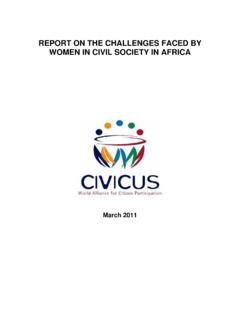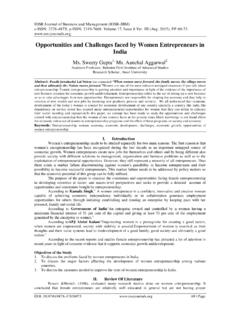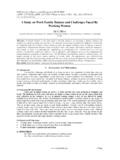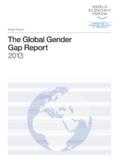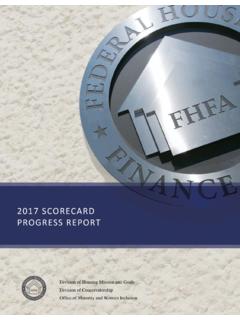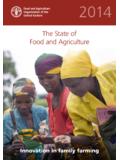Transcription of Youth and agriculture
1 Youth and agriculture : key challenges and concrete solutions Youth and agriculture : Key challenges and concrete solutions Published by the Food and agriculture Organization of the United Nations (FAO) in collaboration with the Technical Centre for Agricultural and Rural Cooperation (CTA) and the International Fund for Agricultural Development (IFAD). The designations employed and the presentation of material in this publication do not imply the expression of any opinion whatsoever on the part of the Food and agriculture Organization of the United Nations (FAO) ), the Technical Centre for Agricultural and Rural Cooperation (CTA) or the International Fund for Agricultural Development (IFAD) concerning the legal or development status of any country, territory, city or area or of its authorities, or concerning the delimitation of its frontiers or boundaries.
2 The mention of specific companies or products of manufacturers, whether or not these have been patented, does not imply that these have been endorsed or recommended by FAO, CTA or IFAD in preference to others of a similar nature that are not mentioned. The views expressed herein are those of the authors and do not necessarily represent those of FAO, CTA or IFAD. This publication contains opinions of and statements by various information providers. FAO, IFAD. and CTA do not represent or endorse the accuracy or reliability of any opinion, statement or other information provided by any information provider.
3 This publication contains links and references to third-party Web sites. The linked sites are not under the control of FAO, IFAD and CTA and FAO, IFAD and CTA are not responsible for the content of any linked site. (FAO) ISBN 978-92-5-108475-5. (FAO) E-ISBN 978-92-5-108476-2 (PDF). (CTA) ISBN 978-92-9081-558-7. FAO, 2014. FAO encourages the use, reproduction and dissemination of material in this information product. Except where otherwise indicated, material may be copied, downloaded and printed for private study, research and teaching purposes, or for use in non-commercial products or services, provided that appropriate acknowledgement of FAO as the source and copyright holder is given and that the FAO's endorsement of users' views, products or services is not implied in any way.
4 All requests for translation and adaptation rights, and for resale and other commercial use rights should be made via or addressed to FAO information products are available on the FAO website ( ) and can be purchased through The resources used by FAO for this document have been provided by the Swedish International Development Cooperation Agency (Sida). Sida does not necessarily share the views expressed in this material. Responsibility for its content rests entirely with the authors. Cover photo: IFAD/Susan Beccio ii Contents Foreword v Acknowledgments vii Executive summary ix Acronyms xi Introduction xvii 1.
5 Access to knowledge, information and education 1. Introduction 2. Case studies 4. 1. Agri-enterprise development and management 4. 2. Rebranding agriculture in schools 5. 3. Young Women Open Schools 6. 4. On-the-job training 7. 5. PhD training in agriculture 9. 6. Distance learning for young farmers 10. 7. ICTs for extension services 11. 8. ICT solutions for agriculture 13. 9. Youth resource centres on agriculture 15. Conclusions 16. 2. Access to land 19. Introduction 20. Case studies 21. 10. Land tenure, farm productivity and enterprise development 21. 11. Land ownership for shea butter producers 23.
6 12. Distributing hillside land to landless Youth 24. 13. Young rural entrepreneur and land fund programme 24. 14. Reclaiming desert land for young graduates 26. 15. Small landlords and large tenants programme 28. 16. Short-term land leases for Youth 28. Conclusions 30. 3. Access to financial services 33. Introduction 34. Case studies 35. 17. Installation aid 35. 18. Public-private investment fund 37. 19. Youth Venture Capital Fund 38. 20. Youth socio-economic empowerment service 38. 21. Financial services for Youth through rural entrepreneurship 39. 22. Friends Help Friends Saving Group 40.
7 23. Loan project for young entrepreneurs 42. 24. Crowd-funding: The goat dairy project 43. 25. Finance and mentorship for innovative young social entrepreneurs 44. Conclusions 45. iii 4. Access to green jobs 49. Introduction 50. Case studies 51. 26. Junior Farmer Field and Life School programme 51. 27. Vocational training in small biogas companies 52. 28. Vocational training for young beekeepers 53. 29. Green jobs apprenticeship programme 54. 30. Raising Youth 's awareness of organic agriculture 55. 31. Agro-ecotourism business 57. 32. Transforming water hyacinth into paper 59. Conclusions 60.
8 5. Access to markets 63. Introduction 64. Case studies 65. 33. Connecting farmers 66. 34. Innovation in distribution and sales 66. 35. Linking producers and consumers 68. 36. Certifying social Youth business 69. 37. Milk and dairy processing 70. 38. Innovative models for young coffee producers 71. 39. Independent business born from the commitment of Youth 72. Conclusions 73. 6. Engagement in policy dialogue 77. Introduction 78. Case studies 79. 40. Young farmers' representation 79. 41. The African Union listening to Youth 81. 42. Documenting Youth policies and initiatives 82. 43. Youth peasant federation 84.
9 44. Echoing the voices of Youth 84. 45. Youth caring about the environment 85. 46. The European Council of Young Farmers 87. 47. YPARD Young Professionals' Platform for Agricultural Research for Development 88. Conclusions 89. 7. Overall conclusions 91. References 97. Annex I: Survey Youth and agriculture : key challenges and concrete solutions' 101. iv Foreword Rural Youth are the future of food security. Yet around the world, few young people see a future for themselves in agriculture or rural areas. Rural Youth face many hurdles in trying to earn a livelihood. Pressure on arable land is high in many parts of the world, making it difficult to start a farm.
10 Youth often also lack access to credit, and many other productive resources necessary for agriculture . But even if such hurdles can be overcome, isn't urban life much cooler? Perhaps, but not if you cannot make a living there. Particularly in developing countries, rural Youth find themselves in such a bind. While most of the world's food is produced by (ageing) smallholder farmers in developing countries, older farmers are less likely to adopt the new technologies needed to sustainably increase agricultural productivity, and ultimately feed the growing world population while protecting the environment.










